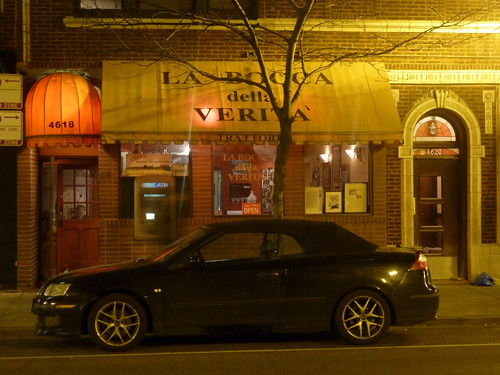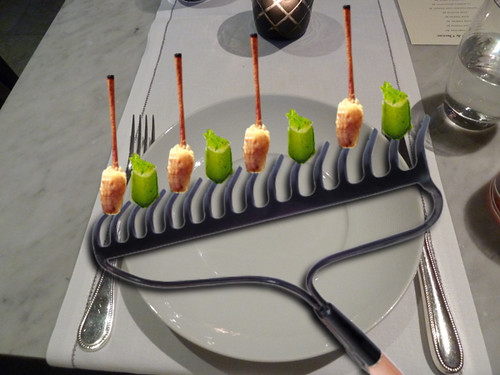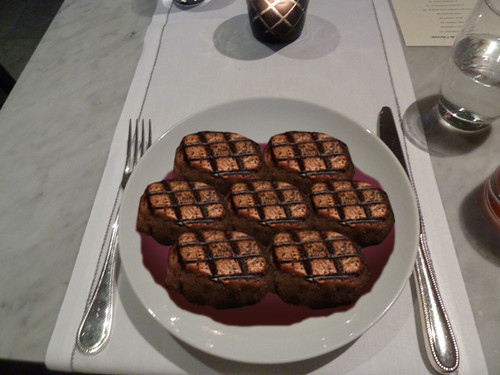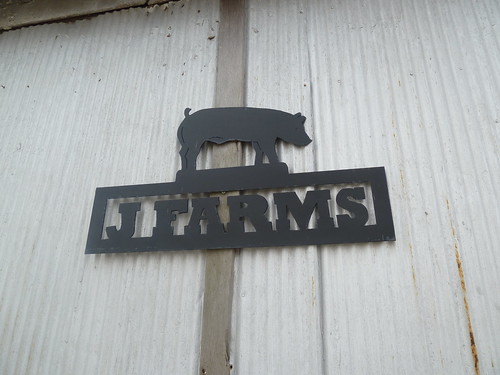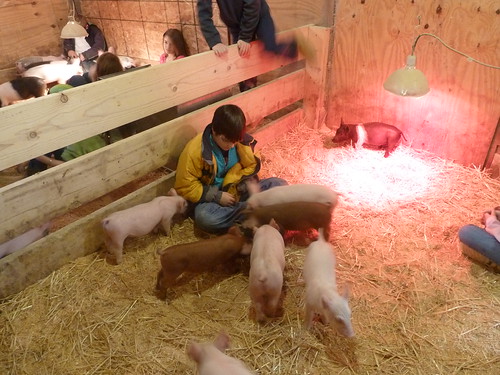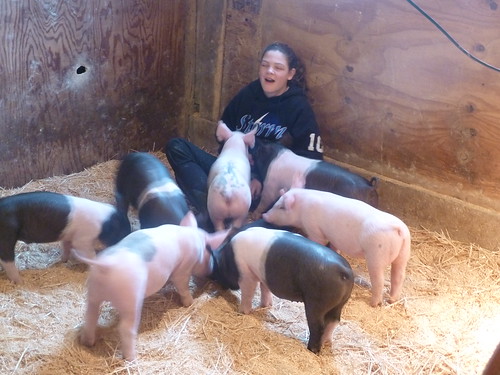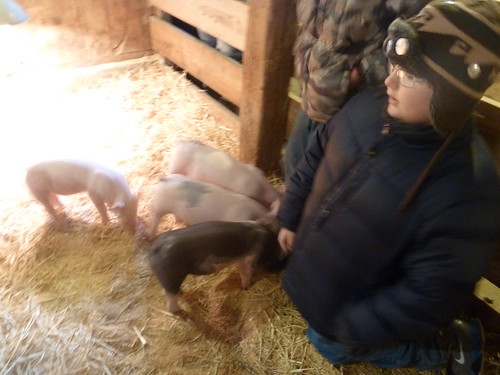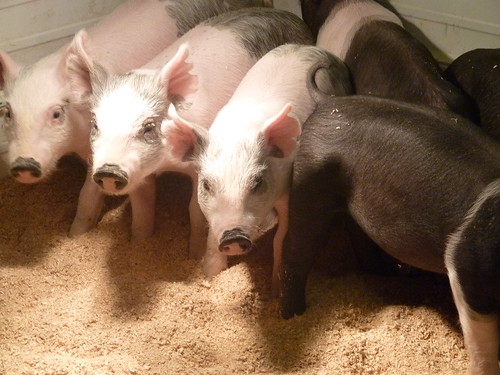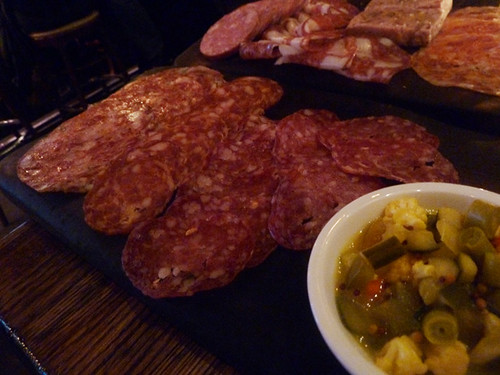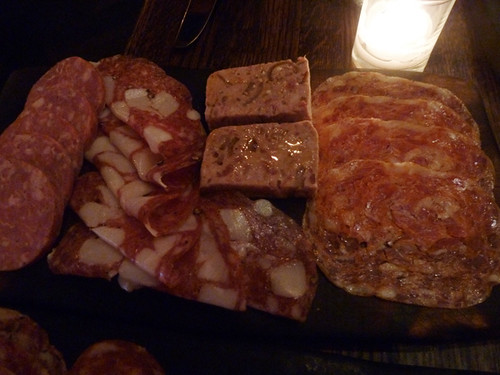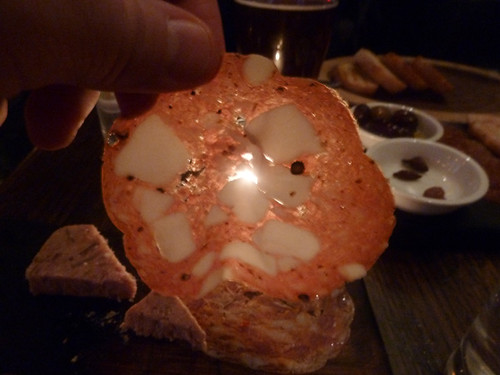
For me, Next-o-mania had curdled by week’s end, and I was thinking of crawling under a rock till it was all over, even as I had contributed my own small bit to it (or maybe because). I hasten to say that I hold nothing against Next the restaurant, or even the brilliantly orchestrated campaign that had made it the hottest ticket in town (so hot it melted down their cutting-edge reservation system). But the way people reacted to it quickly turned ugly— the tickets being scalped on Craigslist, the complaints that the system didn’t work flawlessly under its initial test of fire, the robotic determination to get this ticket right now even if you have to spend your whole week clicking and refreshing like a mouse in a behavioral experiment. As my friend Michael Morowitz put it, as usual more succinctly than I, “Scarcity and exclusivity have completely replaced flavor and authenticity as the key sirens for foodies.”
Add to that the smaller, but equally absurd, mania that popped up around some doughnut shop that opened, but could barely stay open without selling out of $3 doughnuts in minutes, and it was hard not to feel that the foodie scene had jumped the shark last week, lost any connection to the chef-and-farmer-honoring values it occasionally claims to have. I mean, if you pay a scalper a fortune for Grant Achatz’s hard work, how is that honoring his art? How is that respecting him? And if you ignore all the other fine and interesting chefs in town— one of whom just won a Food & Wine Best New Chef award, but could hardly get noticed last week— because getting into Next is all you care about, how is that respecting the diversity and ingenuity that have made our food scene so great? It’s not— in either case, it’s just getting your Hipper Than Thou ticket punched. It’s getting into Studio 54, so you can say you’ve been, and nothing more. At that point the food, the whole artful experience that Next has presumably created is incidental.
So faced with the madness of foodieism last week, I felt like renouncing the world and returning to my monastery, which is to say, ignoring the upscale food world and returning to taco joints and Indian buffets (this is not an ascetic monastery, clearly). Except for one thing: my kids would be at a 4-H sleepover that night. Which meant my wife and I would have a rare night where we could go somewhere grownup, stay out late, order things the kids wouldn’t touch, all that stuff. The harder I try to get out, the more they pull me back in!
I made a mental list of places to try getting into on Friday night, but in the end the first one we drove by didn’t look too packed— many potential patrons were no doubt at home, obsessively refreshing the Next site— and so we found ourselves at the upstairs bar at The Bristol. My last dining experience at The Bristol (not counting Chris Pandel’s Key Ingredient) didn’t exactly work for me, but I have never doubted that it’s an estimable place, perhaps the closest replacement in my heart for its old neighbor Mado, and would never have written it off after one meal.
Upstairs, which I visited for the first time, is basically a bar slash waiting area, where you can order more or less the top, more appetizer-y half of the menu. We let it go at the charcuterie platter, which was more than enough to get us through our wait and a single cocktail. I was slightly disappointed to see that other than lardo there was nothing cured— like, say, the prosciutto Chris Pandel made that I had seen hanging in Old Town Social’s meat vault— but it was soon forgotten as we devoured the velvety chicken liver mousse, the rustic pork pate, and the slivers of lardo atop beets on toast. I’ve had a lot of charcuterie platters of late, and they usually have their good points and not so hot points, but this was not only very good across the board, but seemed to know why it was. It was focused in a way they often aren’t.
Seated downstairs— which meant uprooting ourselves from the far left end of one bar to the far left end of another— we continued our meal with beef heart confit and olive marmalade on toast, topped with lightly dressed arugula. This was a quintessential dish of the moment, of the theme Chicago 2011, pure comfort food made with the discomfiting ingredients that have been made so hot by chefs like Chris Pandel, who somehow domesticated the grody bits so completely that they’re often the first to sell out. This was beef-plus, roast beefy flavor with a side shot of adrenaline. The mania for dishes like this is a mania I can get behind.
We ended with two pastas. One— agnolotti— was pillowy comfort, and as lovable as a puppy. The other— tagliatelle— was, frankly, bizarre, hard to eat, a mouthpuckering tart and fishy combination of anchovies, anise, and bits of pancetta, weirdly reminiscent in ways I could never quite put my finger to of some Thai dish I’ve had. Yet unlikable as it was, it never occurred to me to consider it merely a botch; instead I kept eating it, trying to understand it. It was like one of those occasions where you walk out not liking a movie, and six weeks later, you’re still thinking about it and are convinced it was actually damn near great. This too is a quintessential dish of Chicago 2011— something that culinarily challenging, served at the bar with a beer.
And that’s the other thing about Chicago 2011— that so many of the best restaurants are serving things like this not in the studied perfection of Next, but in the loose, improvisational manner of The Bristol. Liked it? Cool. There’ll be five other things in the next week or two, and maybe one or two of them will be just as good. For people wrapping themselves into fits about whether or not they can get into Next before Paris 1906 is history, there’s no antidote better than the fact that you can drop in to a place like The Bristol and have marvels, and a beer, on the spur of the moment.



 Posted in
Posted in 


